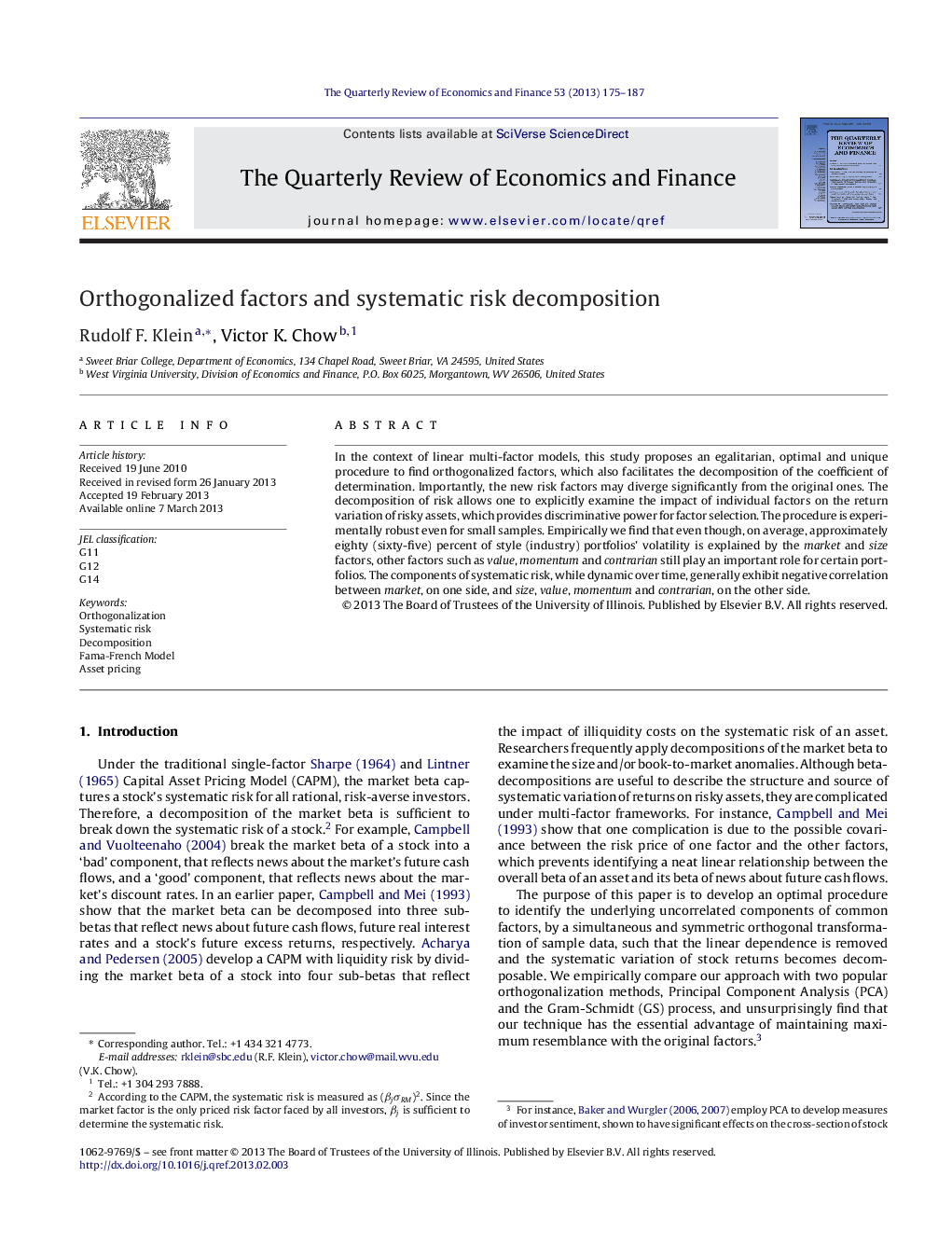| Article ID | Journal | Published Year | Pages | File Type |
|---|---|---|---|---|
| 983358 | The Quarterly Review of Economics and Finance | 2013 | 13 Pages |
In the context of linear multi-factor models, this study proposes an egalitarian, optimal and unique procedure to find orthogonalized factors, which also facilitates the decomposition of the coefficient of determination. Importantly, the new risk factors may diverge significantly from the original ones. The decomposition of risk allows one to explicitly examine the impact of individual factors on the return variation of risky assets, which provides discriminative power for factor selection. The procedure is experimentally robust even for small samples. Empirically we find that even though, on average, approximately eighty (sixty-five) percent of style (industry) portfolios’ volatility is explained by the market and size factors, other factors such as value, momentum and contrarian still play an important role for certain portfolios. The components of systematic risk, while dynamic over time, generally exhibit negative correlation between market, on one side, and size, value, momentum and contrarian, on the other side.
► We propose an egalitarian, optimal and unique method to orthogonalize factors. ► Our procedure can be used to decompose the coefficient of determination. ► Parts of the R-square are allocated unequivocally to each orthogonalized factor. ► We examine the impact of individual factors on portfolio return variation. ► Market and size factors explain about 80 percent of style portfolios’ volatility.
